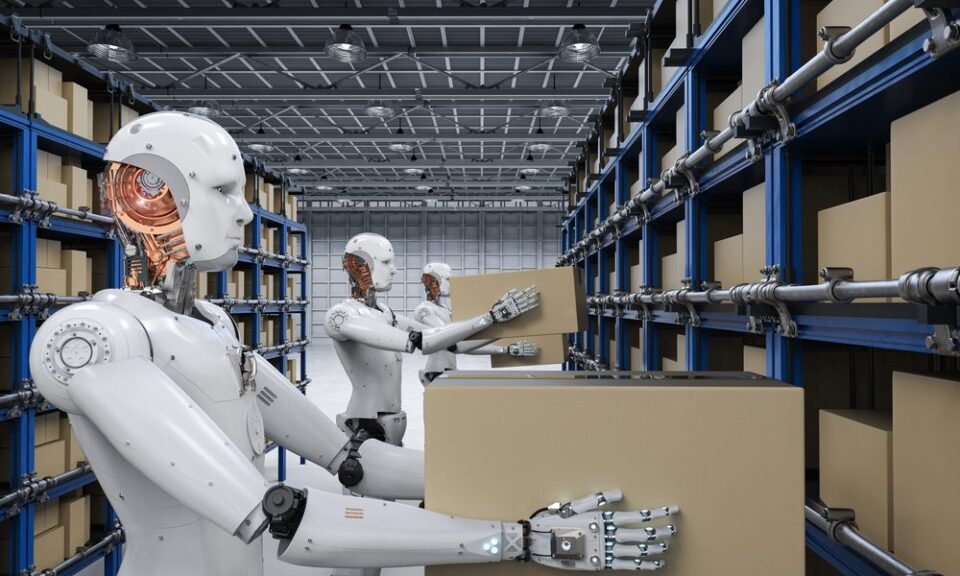In the modern manufacturing era, robotics is the most sought-after technology for improving production efficiency. In many industries, virtual machines replace manual labor to reduce costs and increase productivity. One such sector that is being revolutionized by robotics is the metal and machining industry; as robotic automation increases, traditional manufacturers can provide cost savings and time efficiencies unmatched by manual methods.
This article will explore how businesses within this industry can utilize robotics effectively across all production processes, from design to delivery of products.
Overview of the metal and machining industries
The metal and machining industries have long been at the forefront of technological innovation. These industries have always sought new and better ways to produce parts and products, from the earliest rolling mills to the latest CNC machines. However, in recent years, the most significant changes in these industries have come from adopting robotics. By automating many of the traditional tasks involved in metalworking and machining, manufacturers have dramatically increased their efficiency and productivity.
Robots work faster and more accurately than humans and can also work around the clock, with no breaks and no need for rest. As a result, the metal and machining industries are leading the way in using robotics and are revolutionizing the way products are produced. Machining robotics is used to cut, mill, and drill with incredible precision. At the same time, robots are also being employed in handling materials and parts, finishing operations, assembly, welding, and more.
Benefits of robotics for the production process in these industries
The metal and machining industries are well-suited to robotics due to the range of tasks that robots can undertake. From welding, cutting, grinding, deburring, and post-processing operations—robots can carry out a wide variety of tasks with precision and speed that would otherwise take much longer for humans to complete.
Regarding cost savings, robotic automation has enormous potential compared to manual labor. The initial cost may be higher than hiring manual workers, but robots will save businesses money in the long run as they can work round the clock without breaks or rest periods. Additionally, robots require less maintenance and training than human workers—making them a more affordable option in the long term.
Finally, one of the critical advantages of robotics is that they can carry out complex machining operations with accuracy and precision that human workers could not achieve. It means that manufacturers can produce more accurate and quality parts than ever, improving product lines and customer satisfaction.
Robotics applications in cutting, welding, and manufacturing processes
Robots are now widely used in the various stages of production within the metal and machining industries. In cutting processes, robots can be programmed to precisely cut materials with high accuracy—making them ideal for tasks such as trimming, punching, and drilling.
Welding is another area where robotics has become increasingly widespread. From welding in confined spaces to intricate spot welding operations, robots can carry out these tasks quickly and accurately. Robots can also be used for manufacturing components such as gears or shafts; they can easily manipulate individual parts into larger assemblies.
Finally, robots are becoming more involved in post-processing operations such as deburring and painting—tasks that would otherwise require significant labor. By automating these processes, manufacturers can produce high-quality parts and products more efficiently.
Challenges faced when implementing automation into production processes
Although robotics offers numerous advantages for businesses in the metal and machining industries, there are still challenges to be faced when it comes to implementation. Firstly, robots require significant expertise to program and maintain—making them a costly option upfront. Additionally, robots may lose accuracy over time as they wear out or become damaged—leading to additional costs for repairs and maintenance.
Integrating robots into existing production lines can take time; manufacturers must ensure their systems are compatible with the robot technology to achieve successful results. Finally, there is also the potential for robots to disrupt the workplace, as human workers may struggle to adjust to co-existing with robotic counterparts.
The future of robot technology for the metal and machining industries
The adoption of robot technology in the metal and machining industries is set to continue to grow. As robots become more advanced, manufacturers can use their enhanced precision parts production capabilities. Additionally, artificial intelligence (AI) advancements are allowing robots to become more intelligent and autonomous—making them ideal for automating complex tasks such as assembly operations.
Robotics are already being used within various industries, from automotive manufacturing to medical devices—and the metal and machining industries are no different. With the proper implementation, robotic automation can revolutionize these industries by providing cost savings and time efficiencies unmatched by manual labor. With continued innovations in AI-driven robotics, we can look forward to ever more impressive capabilities for these machines in the future.

